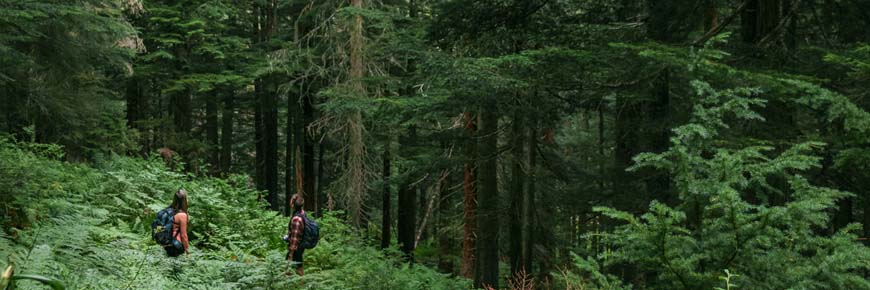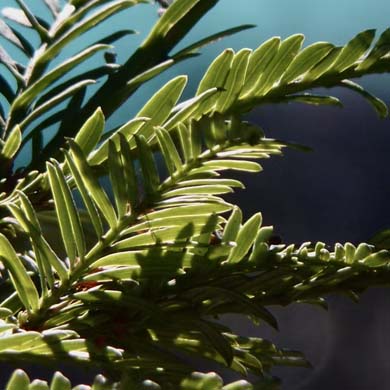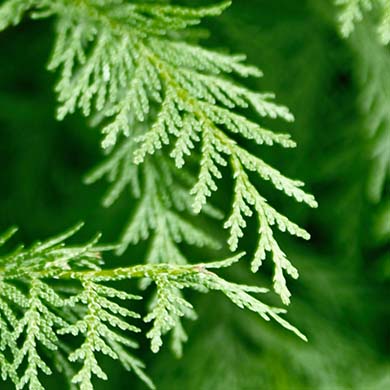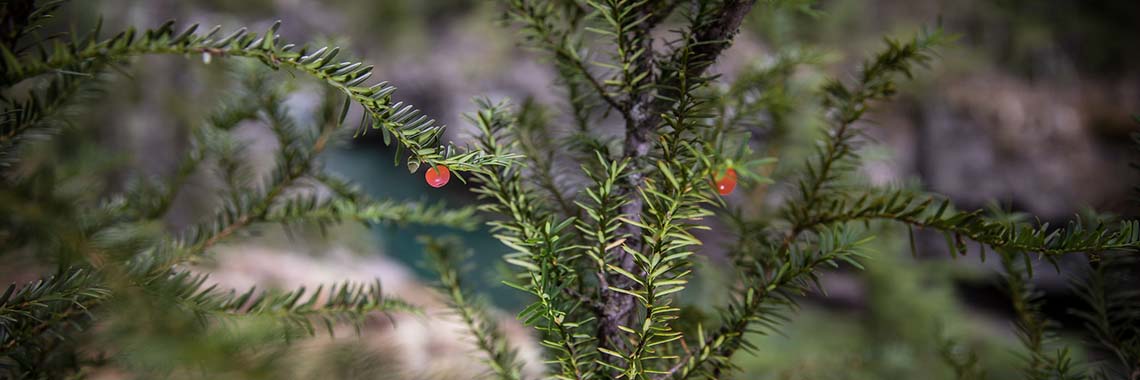
Mid elevation rainforest trees
Mount Revelstoke National Park
The interior temperate rainforest’s abundant rainfall and deep winter snowpack support a wide diversity of plants and animals. The most common trees are western redcedar, and western hemlock. Deep in the shade of these tall conifer trees take a look for the Pacific yew, a characteristic rainforest species with bright red berries. In the drier parts of the forest you might find the western white pine, with its long needles in clusters of five, and Douglas-fir, with its thick fire-resistant bark. These trees are common on most mid elevation trails including the Lindmark trail on Mount Revelstoke and the lower section of Avalanche Crest trail in Glacier National Park.
Pacific yew (Taxus brevifolia)
This small to medium evergreen tree is recognizable by its distinctively flat needles along the branch. Along with its needle structure, the pacific yew also has a unique seed carrier called an aril, a highly modified cone that looks more like a berry. Their bark can vary in colour between purple red and brown colours and contains taxol, a drug used to treat cancer.



Western hemlock (Tsuga heterophylla)
This droopy topped coniferous tree is often the most abundant one in an old-growth rainforest. Its needles are relatively short, with surprisingly small cones (1-3cm) for the size of this tree (30 to 50m in height). The seedlings can survive in very deep shade, often on rotting ‘nurse’ logs which provide them with nutrients for new growth. The boughs have been used by Indigenous people for bedding, as a deodorant and disinfectant.


Leslie Seaton, CC BY 2.0, via Wikimedia Commons

Western redcedar (Thuja plicata)
These beautiful and unique looking coniferous trees are easy to recognize by their flat, fan-like boughs. Some say they remind them of frog’s feet. They have surprisingly small, flowery cones and their bark is vertically striped and strand-like. Redcedar grows at low to mid elevations in areas that retain moisture, such as north-facing aspects or mature forests. Western redcedar can reach 1000 years of age in the wettest parts of this region where they thrive. The wood of this tree resists decay and splits easily. For this reason redcedar has been traditionally used by Indigenous peoples to make clothing, canoes, art, tools, and big houses.


Leslie Seaton, CC BY 2.0, via Wikimedia Commons

Related links
- Date modified :


